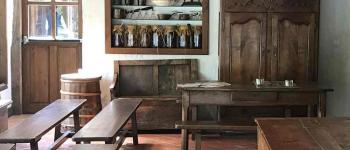
This station was inaugurated in 1928 by Alfonso XIII, King of Spain, General Rivera, Gaston Doumergue, President of the French Republic, and Louis Barthou, Minister and Deputy of the Basses-Pyrénées, the former name of the Pyrénées-Atlantiques, without whom this station might never have seen the light of day.
It was this member for the Basses-Pyrénées who pushed, together with the Spanish, for the line to pass through the Aspe valley, and not through the Ariège, as the French wanted.
Five kilometres after the historic village of Canfranc, the builders planted the station, and built another village - named "Canfranc-Estación" to distinguish it.
More than eight million coniferous trees were planted to stabilize the rock faces and annihilate the risk of avalanches.
In order to evacuate the snow melt water, the station was raised about ten meters.
The building has 365 windows as the number of days in the year and mixes classicism and Art Nouveau, imbued with the Parisian Beaux-Arts style, in line with the Universal Exhibition of 1900.
The Titanic of the mountains
The "international" station is the immense waste of a promise of intense activity between France and Spain.
The Pau - Zaragoza line has only been more or less profitable for two decades, in the 1950s and 1960s, with mountain weather conditions having been a major factor in the difficulties the line has encountered.
Among other problems, a fire destroyed the station in 1931.
In 1936, Franco walled the Somport tunnel, as the Civil War made him fear the arrival of Republicans from France.
The line was only reopened for real traffic.
From 1939 onwards, tonnes of gold ingots passed through Canfranc, a German payment for the iron and tungsten supplied by Franco and Salazar, which was used for Nazi armament.
But the line also made it possible to save many Canfranc Jews who had not complied with Franco's injunctions.
Once the war was over, trains were able to run again, linking the 310 kilometres between Pau and Zaragoza.
In 1970 there was an accident.
On March 27th, on the French side, a train loaded with corn slipped on the frozen rails as it tried to climb up to the Somport tunnel.
The railway workers stopped it to find a solution, but the brakes failed.
He hurtles down the slopes in reverse, before crashing into the Estanguet bridge and rushing into the Gave.
The accident will stop the line which was never really profitable.
On the French side, everything was stopped and the Spaniards kept traffic to a minimum.
Fifty years later, thanks to numerous repairs the station remained out of water.
The peculiarity of the two railway companies, French and Spanish, is the different track gauges which require tracks for each country.
On the Spanish side, a small diesel railcar leads to Huesca.
On the French side no trains have been running since the accident in 1970.
The drifting monument has since been nicknamed the "Titanic of the mountains".
On the Spanish side, the hope was always to revive the station and in the spring of 2020 it was announced that it would be converted into a five-star hotel.
In Canfranc, we believe it!
Translated with www.DeepL.com/Translator
(free version)




